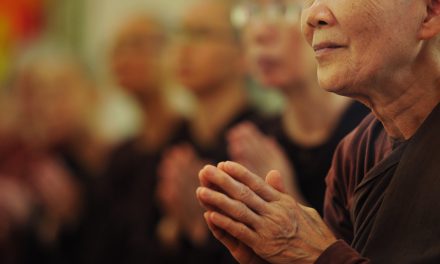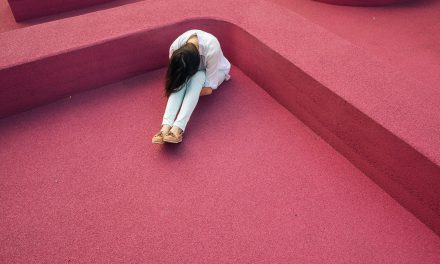Yoga and Schools: For All Levels of Health and Wellbeing in Education
This post is part of an ongoing public discussion relating to the scientific research of yoga and schools that can be found in our referenced videos below. Comments are welcome in the comment field provided below this post. All comments are moderated for content and may or may not be published.
Yoga provides socio-emotional and health benefits to students of all ages and levels. It is also highly beneficial for children in lower socio-economic groups.
The conversation of teaching animates the yoga community, of course. Taking the dialog a step further, we have an intersectional opportunity in considering yoga as a part of—as a pedagogy in—the school system. With education globally upended by COVID, 2020 has proven fruitful for such a conversation. Yoga Alliance’s Director of Yoga Research and Assistant Professor of Medicine at Harvard Medical School Dr. Sat Bir Singh Khalsa and I had much to discuss as four times we talked about the scientific research on yoga in schools.
Though in its nascency as a field, the scientific research on yoga and schools already provides supportive evidence for the benefits of yoga within schools and for students. Whether for mental clarity or stress relief, or for stretching postures and stronger asana (think Surya Namaskar in gym class), yoga can address and improve many aspects of students’ and teachers’ lives.
Four talks: data and advocacy
Dr. Khalsa highlighted more than 40 peer-reviewed publications, many of which have been published in the last two years and are available on our curated site resource. In our first two talks, he covered the research on yoga for students, especially those in K-12 populations. He emphasized the significant mental health benefits seen in regular yoga practice as a framework for understanding how to support students during COVID. The second part of our conversations, “The Scientific Research on Yoga for Students of All Ages and Levels,” Part 1 and Part 2, covered advocacy for yoga and schools (Part 1) and the research behind its benefits for students—and administrators—of all levels in all types of institutions (Part 2).
Mental health “degradations” prevalent at all levels
Throughout all four talks and in several excellent Q&As, we looked at data suggesting that most students face crippling stresses, from bullying to social anxieties to performance stress. He cited recent research on the prevalence of psychiatric disorders occurring by young adulthood, which includes the arresting statement: “[M]ost likely, the lifetime prevalence of psychiatric problems by age 21 well exceeds 80%.”“The point of yoga in schools,” Dr. Khalsa said, “is to prevent more mental health degradations than what already exist in alarming numbers.”
Many expressed the reality of yoga being viewed as a religion in their school districts. What are your thoughts on yoga viewed as religion in schools? Email us your thoughts or post below to start a conversation.
Mental health isn’t all of it. Students face challenges in every area of life, including poor nutrition, lack of exercise, and attention problems. That’s why, in recent years, the scientific and education communities have organized and collaborated around the concept of educating “the whole child.” Read more from The Centers for Disease Control and Prevention (CDC) and The Collaborative for Social and Emotional Learning (CASEL), who have created strategies that help us consider the overall health and the social/emotional wellbeing of the school-aged child.

Scientific research, Dr. Khalsa said, has measures to observe how, if at all, yoga improves the challenges (see chart), both from self-reported, i.e., qualitative characteristics, and from biologically quantified characteristics, i.e., measurements of heart rate variability (HRV), blood pressure, salivary cortisol (a measure of stress), body-mass index (BMI), and others.
As promising as much of the findings so far are, research on yoga in schools is just beginning to be able to ask meaningful questions beyond the simple, first ones that research always starts with: What yoga does, how much of it we might need, and when it should be offered. “It’s a learning curve,” Dr. Khalsa said. “We’re just getting started.”
Effects of yoga have also been studied in medical students, including nurses, and in teachers.
In our September talks, we surveyed what yoga is actually being taught in a variety of educational institutions, not just through groups like bentonlearning and Kripalu’s RISE Program, whose efforts we discussed at length in a 90-minute expert teacher panel on the yoga in schools. Dr. Khalsa also catalogued a top-level list of the studies showing benefits throughout the educational system to manage different types of stress and overall well being.
Three citation highlights
In the jourmal PlosOne, researchers found that in a 10-week study of yoga versus school sports, each practiced 90-minutes once weekly, yoga was better at improving heart-rate variability, resulting in “an improved self-regulation of the autonomic nervous system.” The yoga intervention was conducted in an “ideologically neutral manner” and included the four standard basic elements of western yoga: (1) physical postures (asana), (2) breathing exercises (pranayama), (3) relaxation techniques and (4) meditation.
-
From Elsevier’s Complementary Therapies in Medicine, a study of educational professionals aimed to address the chronic stress and burnout in the profession. “A Pragmatic Controlled Trial of a Brief Yoga and Mindfulness-Based Program for Psychological and Occupational Health in Education Professionals” found that even three days of a yoga-based program improved multiple measures of psychological and occupational health.
Research Citations
Overall Research on Stress and Behavior in School-aged Children
- Are There Benefits from Teaching Yoga at Schools? A Systematic Review of Randomized Control Trials of Yoga-Based Interventions, C. Ferreira-Vorkapic, J. M. Feitoza, M. Marchioro, J. Simões, E. Kozasa,and S. Telles, 2015
- National Youth Risk Behavior Study, CDC, 2017
- APA Survey Raises Concern About Health Impact of Stress on Children and Families, American Psychological Association, 2010
- Yoga in School Settings: a research review, Sat Bir S. Khalsa, Bethany Butzer, 2016
- Benefits of Yoga for Psychosocial Well-being in a US high school curriculum: A preliminary randomized controlled trial, Noggle, Jessica J., Steiner, Naomi J., Minami, Takuya, Khalsa, Sat Bir S., 2012
- School-based Yoga Programs in the United States: A Survey, Bethany Butzer, Marina Ebert, Shirley Telles, Sat Bir S. Khalsa, 2015
- Qualitative evaluation of a high school yoga program: Feasibility and perceived benefits, Conboy LA, Noggle JJ, Frey JL, Kudesia RS, Khalsa SBS, Explore: The Journal of Science & Healing, 9:171-180, 2013
- A Qualitative Examination of Yoga for Middle School Adolescents, Butzer B, LoRusso AM, Windsor R, Riley F, Frame K, Khalsa SBS, Conboy L., Advances in School Mental Health Promotion, 10(3):195-219, 2017
- YOGA AS A COMPLEMENTARY THERAPY FOR CHILDREN AND ADOLESCENTS: A Guide for Clinicians, by LISA C. KALEY-ISLEY,; JOHN PETERSON, COLLEEN FISCHER, and EMILY PETERSON, 2010
- Systematic Review of Randomized Controlled Trials Testing the Effects of Yoga with Youth, Shari Miller, Tamar Mendelson, Angela Lee-Winn, Natalie L. Dyer , and Sat Bir S. Khalsa, 2020
- Implementing yoga within the school curriculum: a scientific rationale for improving social-emotional learning and positive student outcomes, B. Butzer, D. Bury, S. Khalsa, 2016
Behavior, Academics, Physical Health
- The effects of yoga practice on balance, strength, coordination and flexibility in healthy children aged 10–12 years, BetsyDonahoe-Fillmore, EthanGrant, 2019
- Self-Esteem and Performance in Attentional Tasks in School Children after 4½ Months of Yoga, Kankan Gulati, Sachin Kumar Sharma, Shirley Telles, and Acharya Balkrishna, 2019
- Comparison of Yoga versus Physical Exercise on Executive Function, Attention, and Working Memory in Adolescent Schoolchildren: A Randomized Controlled Trial, Satish P. Vhavle, Raghavendra Mohan Rao, and NK Manjunath, 2019
- Evaluation of Yoga for Preventing Adolescent Substance Use Risk Factors in a Middle School Setting: A Preliminary Group- Randomized Controlled Trial, Bethany Butzer, Amanda LoRusso, Sunny H. Shin, and Sat Bir S. Khalsa, 2017
- Yoga in public school improves adolescent mood and affect, Joshua C. Felver, Bethany Butzer, Katherine J. Olson, Iona M. Smith, and Sat Bir S. Khalsa, 2015
- Effects of a Kundalini Yoga Program on Elementary and Middle School Students’ Stress, Affect, and Resilience, Sarkissian M, Trent N, Huchting K, Khalsa SBS, Journal of Developmental and Behavioral Pediatrics, 39:210-216, 2018
Mental Health
- The Descriptive Epidemiology of Commonly Occurring Mental Disorders in the United States, Ronald C Kessler, Philip S Wang, 2008
- Evaluation of the Mental Health Benefits of Yoga in a Secondary School: A Preliminary Randomized Controlled Trial, Sat Bir S Khalsa, Lynn Hickey-Schultz, Deborah Cohen, Naomi Steiner, Stephen Cope, 2012
- Yoga for children and young people’s mental health and well-being: research review and reflections on the mental health potentials of yoga, Ingunn Hagen and Usha S. Nayar, 2014
- Yoga in school sports improves functioning of autonomic nervous system in young adults: A non-randomized controlled pilot study, Julia Frank, Georg Seifert, Rico Schroeder, Bernd Gruhn, Wiebke Stritter, Michael Jeitler, Nico Steckhan, Christian S. Kessler Andreas Michalsen, Andreas Voss, 2020
- Prevalence of Serious Emotional Disturbance Among U.S. Children: A Meta-Analysis. Williams NJ, Scott L, Aarons GA, Psychiatric Services, 69:32-40, 2018
- Estimating the burden of psychiatric disorders in adolescence: the impact of subthreshold disorders, Roberts RE, Fisher PW, Turner JB, Tang M. Social Psychiatry and Psychiatric Epidemiology, 50:397-406, 2015
- One-year incidence of psychiatric disorders and associated risk factors among adolescents in the community, Roberts RE, Roberts CR, Chan W., Journal of Child Psychology and Psychiatry, 50:405-15, 2009
- Cumulative Prevalence of Psychiatric Disorders by Young Adulthood: A Prospective Cohort Analysis from the Great Smoky Mountain Study, William Copeland, Lilly Shanahan, E. Jane Costello, and Adrian Angold, 2011
- Yoga in public school improves adolescent mood and affect, Joshua C. Felver, Bethany Butzer, Katherine J. Olson, Iona M. Smith, and Sat Bir S. Khalsa, 2015
- School-based yoga intervention increases adolescent resilience: a pilot trial, Felver JC, Razza R, Morton ML, Clawson AJ, Mannion RS, Journal of Child and Adolescent Mental Health, 17:1-10, 2020 Children overwhelmingly say improves.
- Yoga in school sports improves functioning of autonomic nervous system in young adults: A non-randomized controlled pilot study, Julia Frank1, Georg Seifert, Rico Schroeder, Bernd Gruhn, Wiebke Stritter, Michael Jeitler, Nico Steckhan, Christian S. Kessler, Andreas Michalsen Andreas Voss, 2020
- Effect of mindfulness and yoga on quality of life for elementary school students and teachers: results of a randomized controlled school-based study, Alessandra N Bazzano, Christopher E Anderson, Chelsea Hylton, Jeanette Gustat, 2018
- Yoga as an Intervention for the Reduction of Symptoms of Anxiety and Depression in Children and Adolescents: A Systematic Review, Aurora James-Palmer, Ellen Z. Anderson, Lori Zucker, Yana Kofman, and Jean-Francois Daneault, 2020
- Evidence for a mental health crisis in graduate education, Teresa M Evans, Lindsay Bira, Jazmin Beltran Gastelum, L Todd Weiss & Nathan L Vanderford, 2018
- Prevalence of Depression, Depressive Symptoms, and Suicidal Ideation Among Medical Students: A Systematic Review and Meta-Analysis, Lisa S. Rotenstein, Marco A. Ramos, Matthew Torre, 2016
- Burnout in medical students before residency: A systematic review and meta-analysis ,Ariel Frajermana, Yannick Morvan, Marie-Odile Krebs, Philip Gorwood, Boris Chaumette, 2019
- The health status of the early care and education workforce in the USA: a scoping review of the evidence and current practice, Laura M. Lessard, Katilyn Wilkins, Jessica Rose-Malm, and M. Chaplin Mazzocchi, 2020
- Burnout syndrome in secondary school teachers: a systematic review and meta-analysis, Marina García-Carmona, María Dolores Marín & Raimundo Aguayo, 2018
- The teachers shortage is real, large, and growing, and getting worse, Emma García and Elaine Weiss, 2019
Studies on Implementing Yoga and Mindfulness in Schools
- Implementing yoga within the school curriculum: a scientific rationale for improving social-emotional learning and positive student outcomes, Bethany Butzer, Denise Bury, Shirley Telles , Sat Bir S. Khalsa, 2016
- Contemplative neuroscience, self-awareness, and education, Aviva Berkovich-Ohana, Patricia A.Jennings, Shiri Lavy, 2018
- Mind-Body Therapies in Children and Youth, American Academy of Pediatrics, 2016
Higher Education and Education Professionals Research
- A narrative review on burnout experienced by medical students and residents, Liselotte Dyrbye, Tait Shanafelt, 2016
- What keeps medical students healthy and well? A systematic review of observational studies on protective factors for health and well-being during medical education, Thomas Kötter, Stephan Fuchs, Marcus Heise, Henna Riemenschneider, Linda Sanftenberg, Christian Vajda & Karen Voigt, 2019
- Teacher Mental Health, School Climate, Inclusive Education and Student Learning: A Review, Christina Gray, Gabrielle Wilcox, David Nordstokke, 2017
- A Pragmatic Controlled Trial of a Brief Yoga and Mindfulness-Based Program for Psychological and Occupational Health in Education Professionals, Natalie L.Dyer, Sara Borden, Jeffery A.Duseka, Sat Bir S.Khalsa, 2020

About the Author
Kim Weeks
Certified Iyengar Yoga Teacher and wellness expert, and founder of a wellness consulting and education company called Weeks Well, whose mission is to foster transformation in work and life.
Videos Associated With This Article
Yoga and Schools
Schools have often faced challenges implementing yoga for their students. Here, learn about the little research done on this topic and the ways children can benefit from this practice.
CE Workshop | Scientific Research on Yoga in Schools, Part 1
Schools have often faced challenges in implementing yoga for their students. Here, learn about the little research done on this topic and the ways in which children can benefit from this practice.
CE Workshop | Scientific Research on Yoga in Schools, Part 2
Schools have often faced challenges in implementing yoga for their students. Here, learn about the little research done on this topic and the ways in which children can benefit from this practice.
CE Workshop | Applications of Scientific Research on Yoga in Schools and Students of All Ages and Levels, Part 1
This workshop uses scientific research on yoga’s effects to make a case for including yoga in the school system, all the way from Pre-K to Doctorate levels. Among data shared is yoga’s measured impacts on concentration, stress reduction, and overall life-meaning.
CE Workshop | Applications of Scientific Research on Yoga in Schools and Students of All Ages and Levels, Part 2
Learn about the growing body of research on yoga effects on schoolchildren of all ages and research conducted on educators. This session cites specific studies covering improved concentration and athletic performance, stress reduction, and yoga’s benefits on students’ breathing and nervous systems.
CE Workshop | Applications of Scientific Research on Yoga in Schools and Students of All Ages
The final event of the Scientific Research on Yoga in Schools series features a panel discussion facilitated by wellness expert Kim Weeks. Guests will touch on yoga’s practical applications in schools and answer the most pressing questions that arose from Parts 1 and 2 of this enlightening series.
We welcome your thoughts.
We invite you to share your questions or insights in the comment field below. To ensure quality of conversations on our blog, all submitted comments are held in queue for moderation and review. We’ll do our best to publish your comments as quickly as possible.
Comment Guidelines.
![]() Keep comments concise and on-topic.
Keep comments concise and on-topic.![]() Be courteous.
Be courteous.![]() Review before posting.
Review before posting.![]() Provide references or links to documentation.
Provide references or links to documentation.![]() Avoid serial comments.
Avoid serial comments.







0 Comments